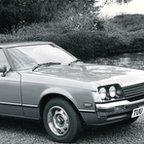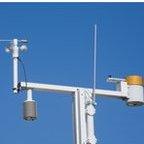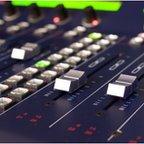Viewpoints: What will you do with your Pi?
- Published
.jpg)
The Raspberry Pi Beta model - but the cheaper Alpha model will work just as well
The Raspberry Pi, a mini-computer launched last week, has been hailed as the device that might help Britain's schoolchildren improve their knowledge of programming and computer science.
But the Pi also promises to kick-start the second computing revolution. Just as the app economy has enabled many people to customise their smartphones, new products like the Pi make it possible for inventors and developers to create their own hardware.
Eben Upton and Peter Lomas are the co-creators of the Pi and now work with the not-for-profit organisation - the Raspberry Pi Foundation - that markets it. Here they give their feedback on some of the ideas.
Eben Upton says: "When we first started developing the Pi, we never imagined the range of applications that people would find for it, and how willing people would be to share their ideas and detailed designs with the community.
"Although it's the Model B that gets most attention from software developers, what's interesting is how many of the hardware projects described here are best suited to the cheaper and lower-power Model A version."
A 'carputer'

Glenn Walsh of Carrickfergus says: "I want to use my Pi as the basis of a carputer (car computer) in a 1980s Toyota sports car. I have already built my own 7in touchscreen which should work with the Pi as I've tested it on a PC running Fedora.
"The interface to the engine sensors is my own design based on a PIC microcontroller and it will communicate with the Pi via USB.
"I'm looking to write the software in Gambas which is a Visual Basic-type language for Linux. I have some of this written already."
"Gerits" from the Raspberry Pi forums has a similar idea. He writes: "I'm trying to create an in-car entertainment system. The Pi would be build in somewhere behind the dashboard and will be controlled via an Android phone over bluetooth or wi-fi.
"I've already started the programming work. I'm creating a music player front end for playing the music, and will add some features to transfer music over bluetooth/wi-fi."
Eben Upton: "Carputers are one of the most popular suggestions on our forums. I like Glenn's plan for connecting to a microcontroller; although Pi has some basic interfacing capabilities, this will allow him to connect a lot of analogue and digital sensors very cheaply. I'd be interested to know how the touchscreen connects to the Pi; if he's figured out how to do this cheaply and can share the details online he might have a hit on his hands. Gerits is probably best off using wi-fi to communicate with the Pi; he can find a list of supported adapters here, external."
Peter Lomas: "The touchscreen display is especially interesting, and publishing some more info on this would be an exciting addition to our developer forums. Gerits has more of an infotainment feel, but he will need quite a few add-ons to achieve his goals."
A weather station

"Sharix" from Slovenia on the Raspberry Pi forums says: "I'm planning to build a weather station based on the Raspberry Pi. At first it's going to have a temperature sensor, air pressure sensor, humidity sensor, wind speed sensor and a webcam.
"Later I'll add a photodiode or something similar for light measurement, wind direction and probably some more sensors."
Eben Upton: "Another great idea, which like Glenn's carputer will benefit from connecting a microcontroller to handle the inputs from the various sensors. Although Sharix could probably build something like this using a microcontroller on its own, adding a Pi will simplify the development process and let him plug in a screen for on-the-spot debugging if things go wrong. I don't know how cold Slovenia gets in the winter, but he might want to think about insulating the board a little to make sure we don't freeze."
Peter Lomas: "This is probably the most 'pure' use of the Pi on the list. Most of the sensors can be interfaced fairly easily with suitable analogue to digital converters over a serial bus. He doesn't say how the Pi will be powered, but a solar cell and rechargeable batteries would do the trick, although some careful design of the power circuit will be required."
An online radio station

Djyorkie from the Raspberry Pi forums has started to build an online radio station on a tight budget, using the Pi as the media hub. He writes: "The plan is to build the station using just £45 in 45 days, and that is to include hardware, software, web space, streaming… basically everything.
"So far, I have managed to gain a domain name, web space, a bunch of professional jingles, and help from a site in building an android app to also listen.
"I am planning on using a Pi as a hub for the station, mainly because it's small, and its low power consumption and low noise means I can have it running on auto 24/7 and just plugging it into my TV to do the occasional live shows."
Eben Upton: "I spoke with Djyorkie a little while ago about his plan and I'm really looking forward to seeing it happen. Because the Pi is silent, and consumes less power when running than a lot of TVs do on standby, a lot of people are just going to leave them on all the time. The software team has put a lot of effort into making the system very stable so it can run for weeks at a stretch without a reboot."
Peter Lomas: "Djyorkie has not said much about how he intends to record or store the material. Certainly the Pi will meet his expectation for low power. It would be possible to build a decent audio input for the Pi through the general-purpose input/output port. He could also create a basic mixing and editing desk. For audio output, the on-board stereo output is probably not good enough sound quality, but for monitoring he could use the HDMI interface or roll his own. If his content is popular I'm not sure how the web server will hold up but it looks as if he intends to use web space for that."
A robot controller

Stefan Wold, from Knivsta in Sweden writes to the BBC: "I intend to create a bridge between Lego Mindstorm and Raspberry Pi to get more computing power, that way I can process stuff like images etc faster and feed it back to the Lego Mindstorm robot to act upon.
"Until I get my hands on the Raspberry Pi, I'm not really certain which parts I would need. I believe a sensor kit from either mindsensors.com or hitechnic.com would suffice to create a bridge between the Raspberry Pi and Mindstorm NXT.
"Regarding the software I'm a big fan of the leJOS firmware for the NXT. For the Raspberry Pi I will use any programming language which allow me easy access to the input/output header.
"I have plenty of ideas of what to do with the Robot and Raspberry Pi. The first thing I'm going to build is a NXT robot text plotter that will be able to write alphabetical letters using a pen.
"And this is where it will get interesting. I intend to use the Raspberry Pi with a mounted USB web camera and write an application that has the ability to do face recognition. When a person is recognised it will transfer the name of this person over the bridge which the NXT then turn into text."
Eben Upton: "A friend of ours wrote a lot of the NXT software, so we're already thinking about how to hook up a Pi. I think what Stefan suggests should work, though it can be a tricky thing to get working. We hope to see a lot of this sort of thing, where the Pi is used to add extra processing capability to popular but less-powerful systems like Mindstorms and Arduino. The face recognition plan sounds like it would benefit from a camera add-on board or the micro-Pi I mentioned earlier; we need to get cracking on that."
Peter Lomas: "Hooking up the power of the Pi to Mindstorms is a very interesting idea. We see imaging and camera technology as a central idea. The cross coupling will give access to a wide range of robot parts and sensors. The input/output port has the right kind of interface so the cross connections should be easy and the 'open' computing power and connectivity of the Pi would provide some interesting remote control opportunities. Stefan could consider using two Pis and develop a wireless link so his robot could be independently mobile while also being able to communicate to the world."
Dr Eben Upton of the Raspberry Pi Foundation shows Rory Cellan-Jones how the computer works
- Published8 March 2012
- Published29 February 2012
- Published29 February 2012
- Published29 February 2012
- Published29 February 2012